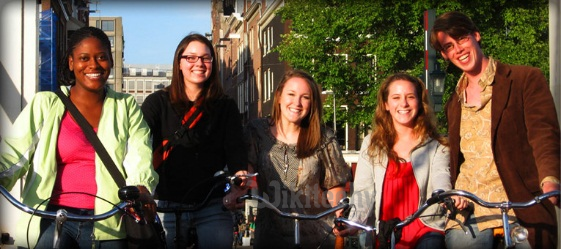
Netherlands Interview Outfits
Netherlands Details
- Netherlands people - Netherlands
- Netherlands capital / capital of Netherlands - Amsterdam
- Netherlands language - NethDutch, Frisian, English, Papiamentoerlands
- Netherlands population / population of Netherlands - 2017 estimate 17,100,475
- Netherlands currency - Euro (EUR) , US dollar (USD)
- Dress is somewhat informal in comparison with countries such as the UK or Japan.
- To some extent, dress code is determined by industrial sector.
- The more conservative areas such as banking tend to veer towards suit and tie whilst the newer industries take a more casual approach.
- Even the sectors with a more casual approach would, however, remain fairly smart.
- As with the USA it is always a good idea to check before travelling.
- As the Netherlands suffers from a fairly heavy average rainfall figure, umbrellas and raincoats are often necessary.
Read Also
Canada Interview Outfits.NETHERLANDS DRESS CODE FOR JOB INTERVIEWS
- It is important to demonstrate at an interview good appearance as well as good manners.
- “DRESS FOR THE JOB YOU WANT, NOT FOR THE JOB YOU HAVE”
- The Dutch prefer fashions that are casual, unpretentious, conservative and subdued.

- Men may wear suits and ties, though sport coats are acceptable.
- Taking off your jacket in an office is acceptable.
- Women should wear suits or dresses.
- Caps, bandannas, athletic shoes, sweats, unkempt clothes, jeans, singlets, open shoes and thongs are never acceptable.
- If the wind was blowing, comb your hair before making first contact at the reception. Do not carry a water bottle or coffee mug.
- Carry only a slim folder holding your job application documents and CVs. Do not chew anything.
BUSINESS DRESS CODE
- The Dutch tend to dress fairly conservatively in business, though standards and styles vary widely from one industry to another: formal attire is normal in banking, open-neck shirts and jeans in the IT and entertainment sectors. In most Dutch organizations, it is generally normal to wear a jacket, not necessarily a suit, to take the jacket off when working
- Colour has no particular significance, and colourful shirt/tie combinations are quite usual in some sectors, such as marketing and service industries.
- Women, the younger generation in particular, may wear trousers, particularly trouser suits. When in doubt about the dress code for a particular business event, it is advisable to be well dressed rather than under-dressed. Uniforms, except at the janitor level, are rarely worn.
- Sometimes, choice of clothing will be determined by the means of transport to work. In major cities such as Amsterdam, many people travel by bicycle or tram.
- If unsure of the dress code and what to wear, it is perfectly acceptable to ask someone from the company you are visiting. It is often better to find out in advance, so that you can make any necessary changes to your clothing before your introductions. This will help you to feel confident and relaxed in your encounter with the company.

Read Also
Bohemian ClothingGUIDELINES FOR BUSINESS DRESS
- Business dress in the Netherlands is fairly conservative, but it depends upon the profession.
- In the financial industries [perhaps the most conservative of all], most businessmen wear dark suits, muted ties, and white shirts; women typically dress in dark suits and white blouses. Expect to wear the same clothes when invited to dinner.
- Some professions [mostly related to consumer products, IT and arts] allow very informal dress. Quite a few executives save their ties and jackets for outside the office.
- As in many countries, Dutch men remove their jackets when working. Follow their lead.
- In certain industries, you may be surprised to find that the higher a person’s rank, the more informally he or she is permitted to dress. For example, in some offices, you may find the sales clerks in suits and the boss in jeans and a sweater.

- Because of the stress on egalitarianism in this society, the wealthier and more successful a Dutch executive becomes, the more he or she must make an effort to maintain an ordinary appearance. Generally, the wealthy do not wear beautiful designer clothes [at least not immediately visible as such.
- Generally, being pragmatic, the Dutch like to dress informally. You’ll observe that in some industries, very few men wear suits. A more popular ensemble consists of gray flannel trousers with a sports coat–which can often be worn even when attending a dinner.
- If you opt for this look on a more formal dining occasion, such as at the home of a boss or other superior, wear a tie. Whenever you’re in doubt, the best policy is to call ahead and inquire about the dress requirements.
- Dressing up is permissible on appropriate occasions. A tuxedo for men and an evening gown for women may be expected for formal parties, dinners, or an opening night at the theater.
- Casual wear is essentially the same as in the North America. Shorts, however, are acceptable only when jogging or hiking.
STANDARD CLOTHING
- Average attire includes jeans, T-shirts, sweaters and whatever shoes fit the season. Dress code in general tends to be informal.
- You can see variety of cultures in netherlands such as dutch people , italian culture , german culture , spanish culture
- Seasonal temperatures remain relatively moderate, and clothing reflects this. The Netherlands receives heavy amounts of rain, however, so its citizens often need rain wear.
- Various dresses are real famous and netherlands people loves to have other countries dresses such as, silk dress, dresses australia, dresses canada, mexican dress, spanish dress, dutch costume, usa dresses,french dress,german dress

- Weather conditions determine appropriate clothing in the Netherlands. Otherwise, clothes appear similar to those worn elsewhere. Netherlands culture has unique traditional clothes, although people in the Netherlands only wear traditional clothes during special occasions.
Read Also
Irish Interview Outfits.TRADITIONAL CLOTHING
- The style of traditional dress worn in the Netherlands first developed in the 16th and 17th centuries. Modern Dutch wear contemporary clothing, but the traditional costume is still seen during dances and festivals.
- Variety of searches from netherlands people includes silk gown , canada coats , china dress , dutch clothing , canada dresses , dresses usa , sea dress , australian dresses , canadian clothing stores , dutch hat , old dresses , dress silk , old shed , dutch girl costume , coats canada , dutch girl outfit , dutch costumes for sale , henry holland dresses , dutch girl hat , dutch outfits costumes , 17th century costume , costume netherlands , dutch girl dress , dutch costume pattern , dutch woman costume
- Costumes vary slightly by color and pattern depending on which of the 12 provinces are represented. All start with the basic long sleeve dress and apron worn by women and the rustic work clothes worn by men.
- The Dutch are a very practical bunch of people. Most people, when asking them what to wear in Holland will tell you: a raincoat should stop you from getting wet, a bag should carry all your crap, a sweater should keep you warm. Simple as that, right?
- So, one of the most important things with Dutch clothing is that you want to be prepared for any type of weather. You will never quite know what to expect when leaving the house. Work in layers, so you can peel off or put something on. Don’t forget your umbrella, gloves and scarf, especially in fall and winter.

TRADITIONAL MEN'S CLOTHING
- The traditional male costume includes woolen pants with silver buttons on the front square flap, as well as wooden clogs, a shirt, a jacket and a hat. The shape and design of the hat varies according to region.
TRADITIONAL WOMEN'S CLOTHING
- Traditional dress for women includes long skirts, blouses, aprons and shawls or other shoulder decorations. Hats vary according to region, and most women wear wooden clogs. Clothes for special days and Sundays use better fabric and lace. Some skirts include stripes, while others are plain. Some women also wear a jacket with short sleeves or an embroidered scarf.
